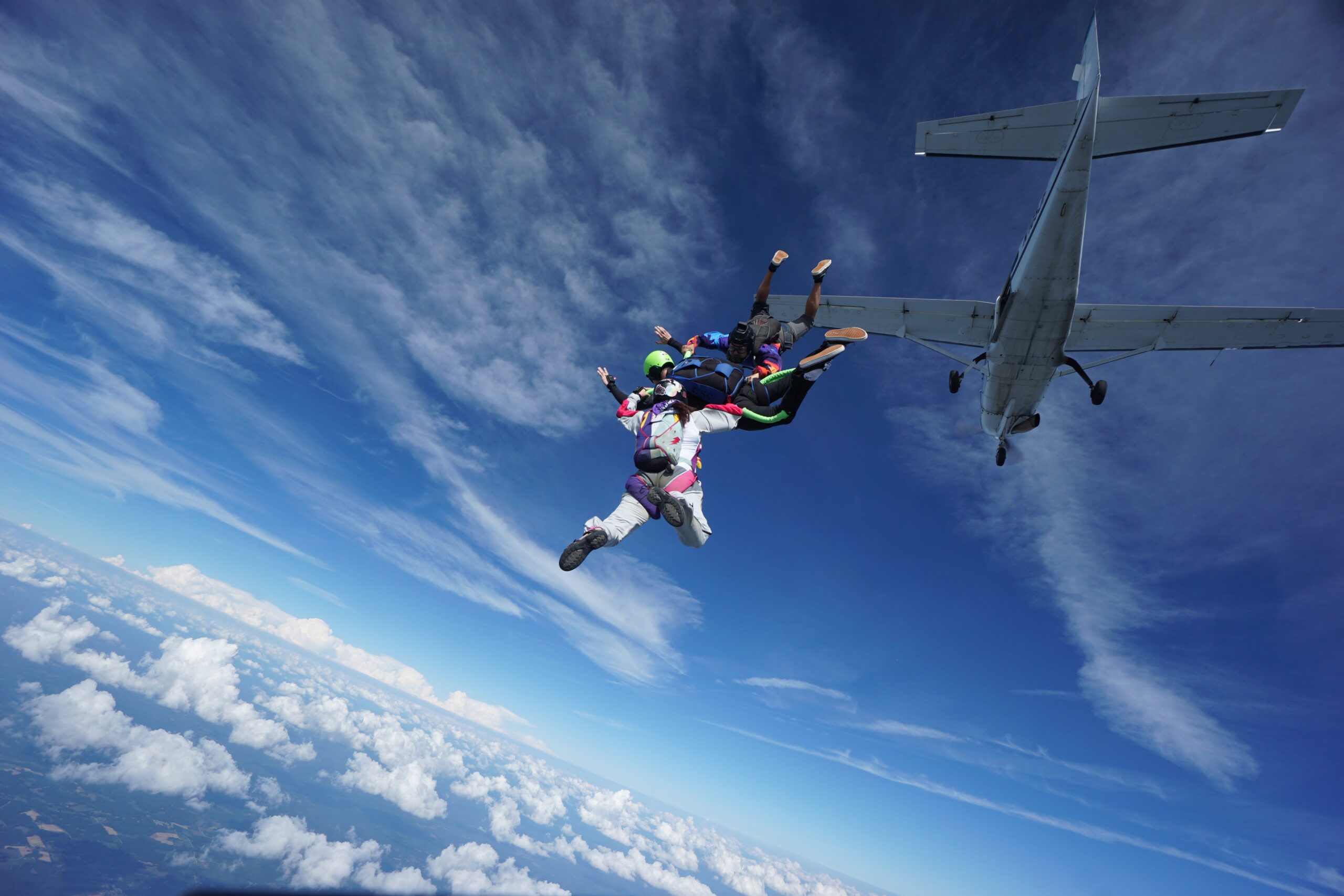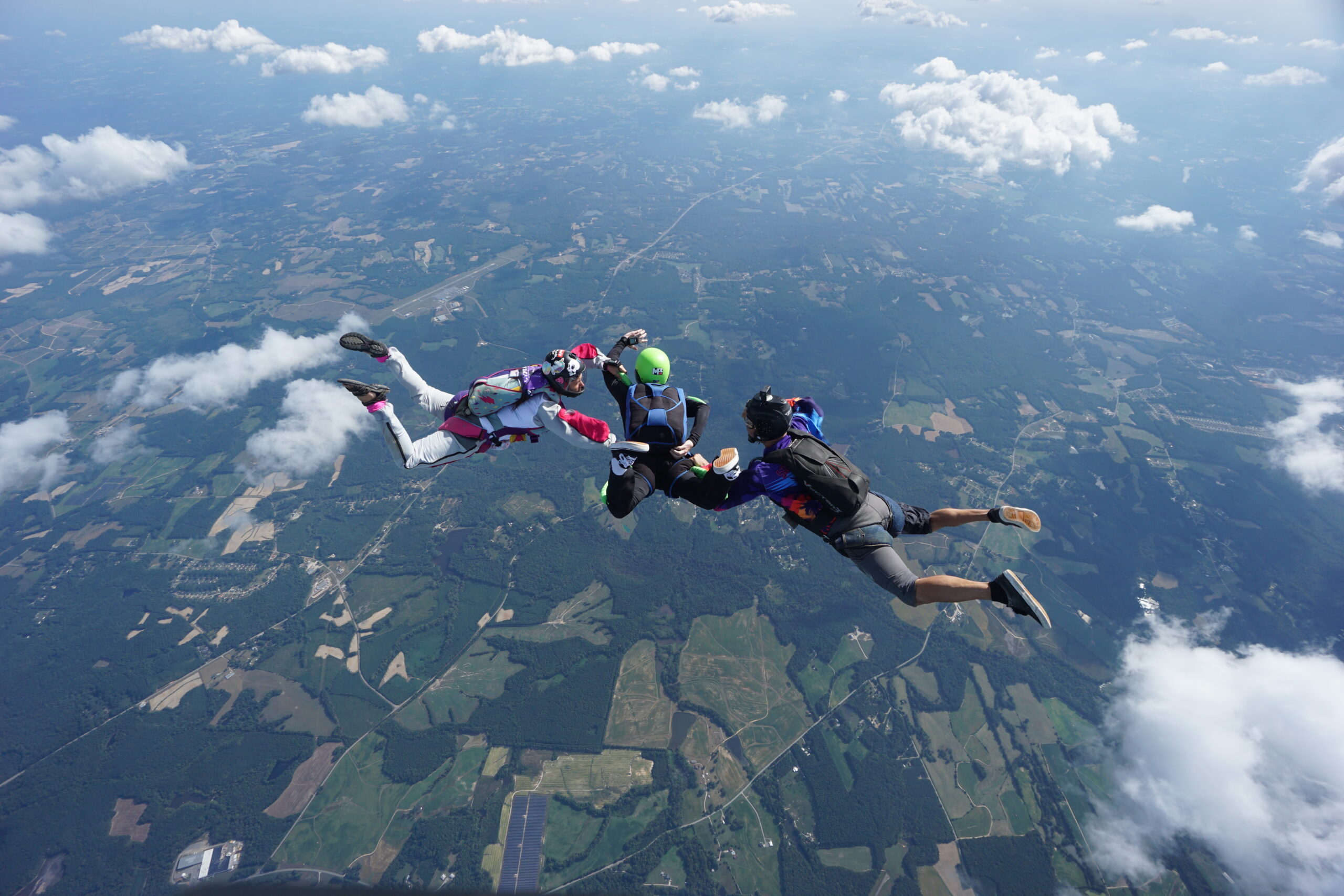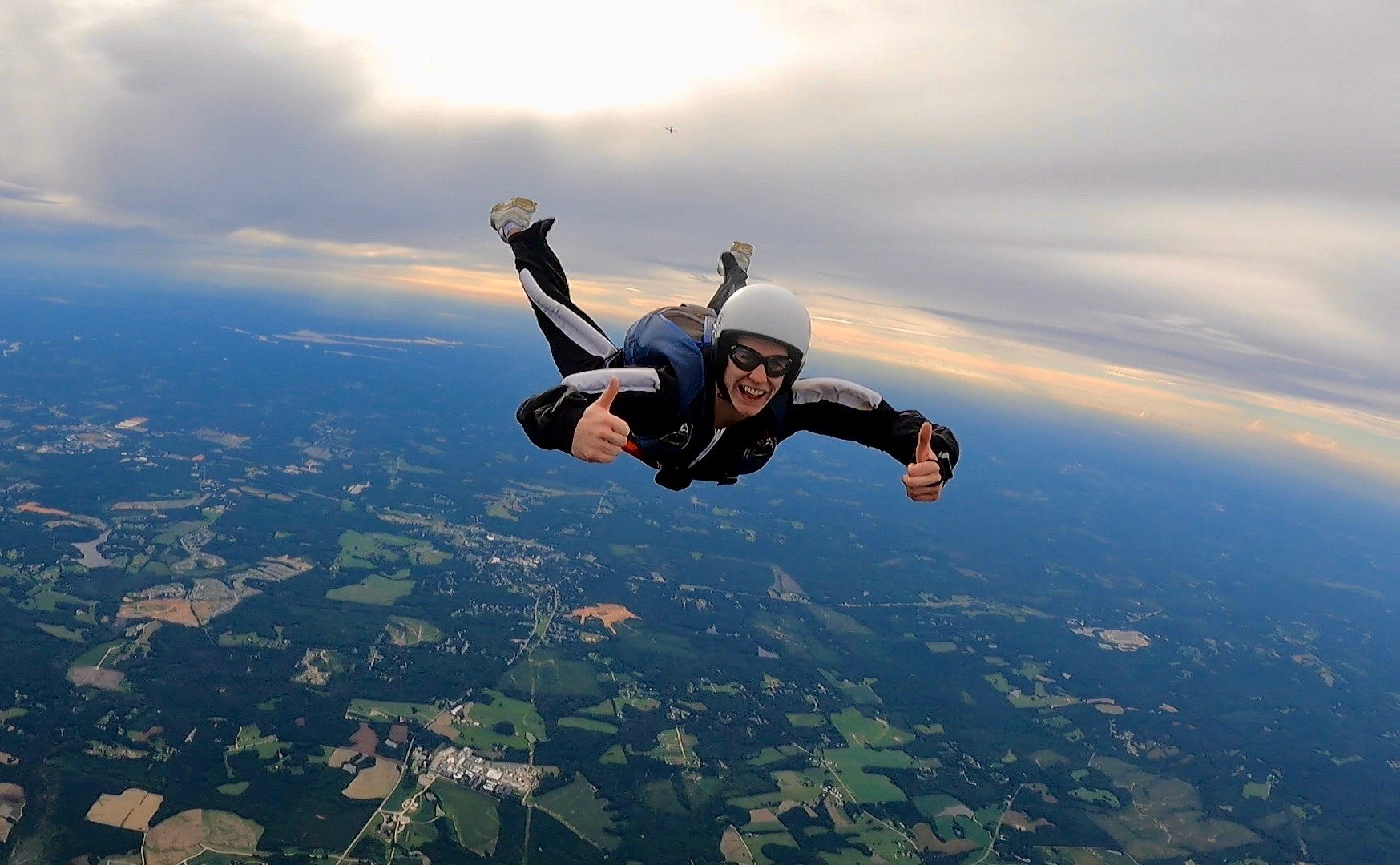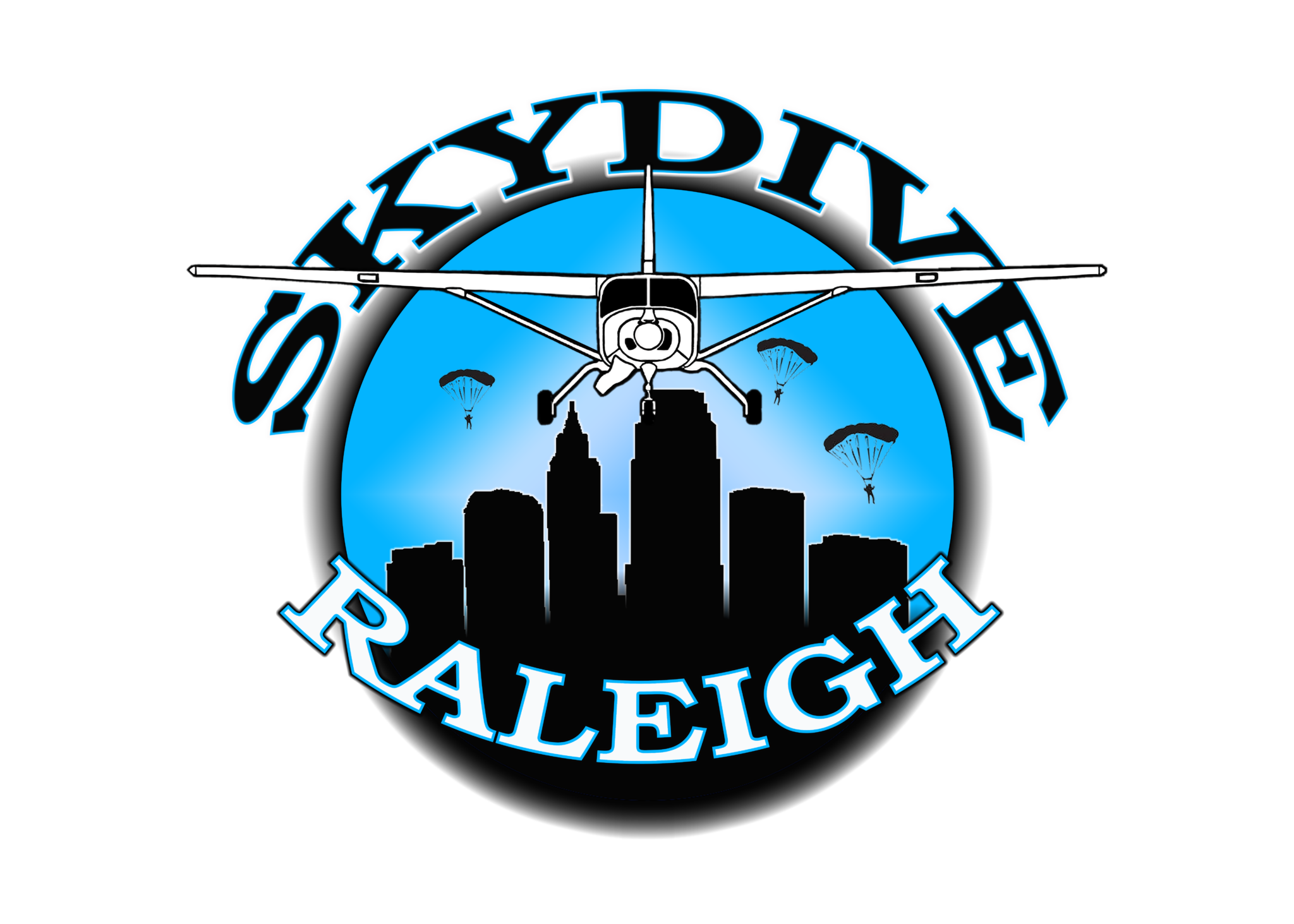LEARN TO SKYDIVE
LEARN TO SKYDIVE AT SKYDIVE RALEIGH
Skydive Raleigh can teach you to skydive solo safely using the United States Parachute Association’s Integrated Student Program, and help your earn your skydiving license.
Our highly experienced USPA-certified instructors can take you through the complete ground training syllubus. They’ll also accompany you on all your training skydives to help you reach your goal of becoming a licensed skydiver, able to jump solo or with your licensed friends!
HOW DO YOU GET A SKYDIVING LICENSE?
You’ve done your first tandem, now what? Take the next step and learn to skydive! We can take you all the way from your first tandem skydive through all the training needed to get your first skydiving license. Learn about each step below.

Ground School
Your training program starts with ground school, called the First Jump Course. This phase typically takes 4-6 hours. Here you’ll learn about the equipment, freefall, and flying a parachute. This is conducted in a classroom setting. If have havent yet done a tandem skydive, you’ll do one afterwards with one of our certified instructors to introduce you to freefall and parachute flight.

First Supervised Skydive
For this skydive you’ll wear your own parachute, and will be with two certified freefall instructors. They’ll accompany you throughout the freefall portion of your skydive, from the moment you exit the aircraft until you deploy your parachute.

Training Skydives
This phase is, at a minimum, 10 additional skydives, where further skills are taught in the air and on the ground. Additional skydives might be needed to master each new skill. For each jump you’ll have one or two freefall instructors with you.

Coach Skydives
Coach jumps begin after you have been cleared by your AFF instructor(s) for self-supervised skydiving. You’ll continue training, learning freefall and parachute handling techniques over approximately 25 jumps to complete the criteria for a USPA ‘A’ license.
LEARN TO SKYDIVE PRICES
The prices for each stage of the learn-to-skydive training are listed here.
The prices include all the equipment rental and training needed to complete each skydive. United States Parachute Federation membership and licensing fees are not included.
Take that first step with us to get licensed and contact us today to schedule your course!
ARE YOU READY TO JUMP?
Whether you’re a first-time jumper or an experienced skydiver, the thrill of falling from such great heights is sure to be an unforgettable experience.
